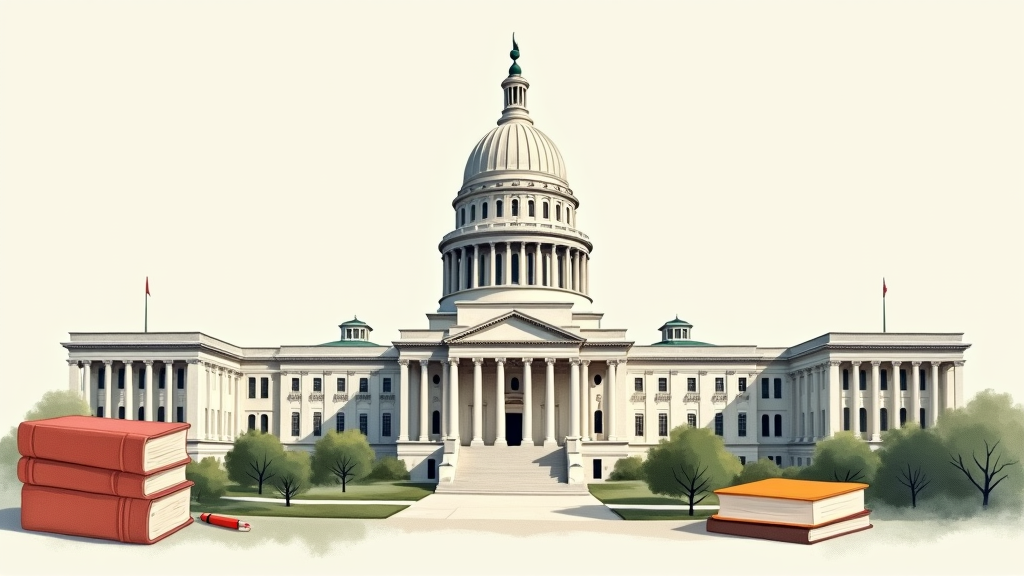Introduction
For families choosing to homeschool, state policy is more than just a framework. It shapes the opportunities available for personalized learning. Over recent years, powerful State Policy Actions to Support Homeschooling have emerged that give parents and students more freedom and flexibility. These measures are designed to reduce red tape, simplify processes, and allow families to focus on what matters most: quality education tailored to each child’s needs. This article explores state policy actions to support homeschooling, offering families more choices and freedom in education. It explains the current shifts in policy and how they directly impact everyday homeschooling experiences.
Understanding State Policy Actions to Support Homeschooling
In many states, legislative changes are designed to support homeschooling, which means fewer bureaucratic hurdles and more educational choices. Recent reforms simplify registration, streamline reporting, and open the door to innovative funding models. These efforts are a clear signal that state policy actions to support homeschooling are actively lifting up families. By lessening the administrative burden, the state allows parents to focus on the creative aspects of education. This nurturing approach makes it easier for families to craft their own curricula. In doing so, states acknowledge that an effective education can take many forms, especially when it comes to tailored learning at home.
State Policy Actions to Support Homeschooling: Opening New Doors for Educational Freedom
The term State Policy Actions to Support Homeschooling is gaining ground among policymakers and educators alike. These policy actions help create an environment where every family can choose the educational path that fits best. Lawmakers are fostering a setting in which homeschooling not only survives but thrives. This has been achieved by improving access to state resources, reducing mandatory oversight, and encouraging local cooperation between home education groups and authorities. The reforms provide help with curriculum design while still respecting family choices. The net effect is to give families the power to decide what works best for their children without being weighed down by unnecessary regulations.
Key Components of Effective State Policy for Homeschooling
Effective policies come with clear objectives centered on educational freedom, streamlined practices, and targeted support. One significant reform has been to simplify the registration process, enabling families to start homeschooling with ease. Many states also offer digital tools that help with curriculum tracking and progress reporting. These advancements mean that paperwork is reduced and parents can dedicate more time to teaching and learning. Clear guidelines serve to protect both children and parents by ensuring that educational standards are met without the rigidity of traditional schooling. With this balance of oversight and freedom, the homeschooling experience becomes more accessible and effective.
Essential Policy Elements: State Policy Actions to Support Homeschooling in Action
State policy actions often include measures such as reduced reporting requirements and improved avenues for funding. For example, many regions have introduced digital filing systems that allow for rapid updates in educational plans. Some laws even include provisions for tax credits or financial grants aimed at offsetting home education costs. These practices help to lessen financial stress while encouraging quality education. In addition, guidelines now embrace alternative teaching methods and project-based learning, which increases engagement and creativity. When these policy measures are in place, parents report feeling more supported and free to try new approaches in how they teach their children.
Bridging Gaps: Empowering Families With Specific Policy Supports
Numerous policy actions are designed to bridge the gap between traditional education and homeschooling. By offering specific supports, state policies lift up families to manage educational choices more effectively. In several states, legislation now allows homeschooling families to access community facilities, such as libraries and vocational centers, for extra learning opportunities. These changes include provisions for training sessions that focus on curriculum development and modern teaching techniques. By reducing unnecessary restrictions and boosting resource availability, these policies create a dynamic environment where learning is both structured and flexible. The emphasis is on practical support rather than rigid control, meaning families are free to explore methods that work best for them.
Practical Policy Measures That Benefit Homeschooling
State policy actions to support homeschooling translate theory into everyday benefits. Several states have introduced measures that simplify administrative tasks and provide financial relief. For instance, a simplified application and renewal process means families spend less time on paperwork and more time engaging in learning activities. Moreover, some state policies incorporate flexible curriculum standards, allowing parents to integrate unconventional teaching methods into their daily routines. These benefits are very important as they offer a balance between structure and the creative freedom needed in home teaching.
- Simplified registration processes reduce time spent on administration.
- Digital reporting systems make tracking educational progress easier.
- Flexible curricular guidelines support innovative and personalized teaching methods.
- Financial incentives like tax credits help ease the cost burdens of homeschooling.
When these measures are in place, the daily challenges of homeschooling lessen. Parents can then devote more energy to nurturing their children’s learning experiences. The result is an educational environment that supports rigorous academic progress and fosters a sense of creative exploration. Each child’s needs are met in a system that values flexibility and innovation.
Local Impact and Daily Practices
Across the nation, local communities have seen state efforts help homeschooling become more efficient. In many areas, revamped registration requirements and online processes have reduced administrative challenges. Schools and community centers sometimes serve as resource hubs where families can access libraries, digital tools, and workshops. These streamlined policies lighten the load for parents and help keep track of children’s progress. Simplified reporting and flexible assessment methods have led to noticeable improvements in student engagement and achievement.
These changes not only cut down on paperwork but also foster a sense of community, where educators and parents work together to support learning. By using digital reporting tools and simplified processes, families find more time for creative teaching and interactive learning activities. Improved systems have paved the way for easier communication with local education officials, ensuring that any concerns are quickly addressed. Overall, reducing bureaucracy in homeschooling has brought tangible benefits that show up in daily classroom dynamics at home. Families report feeling more confident and supported, which translates into better educational outcomes and a more enjoyable homeschooling experience.
Final Thoughts
The adventure toward a supportive policy framework for homeschooling continues to bring practical changes to families’ lives. State policy actions to support homeschooling have already made a wide-ranging difference—from streamlined enrollment processes to increased flexibility in curriculum design. These changes show that when state policies are crafted with family needs in mind, educational outcomes improve and communities become stronger. Every improvement, from digital reporting systems to local community hubs, reinforces the idea that education can be both personalized and effective. The promising future ahead means that parents have the freedom to design a learning experience tailored to their child’s unique needs. Even as challenges remain, ongoing dialogue between policymakers, educators, and parents hints at even greater progress on the horizon.
Additional Resources
- Article – State Policy Actions to Support Homeschooling: Another Choice for Families
- Resource – Educational Research and Policy Analysis
- Article – State Policy Actions to Support Homeschooling, Another Choice for Families | Issues
This article includes links that may generate a small commission if purchased at no extra cost. For details, please see our affiliate disclosure.


